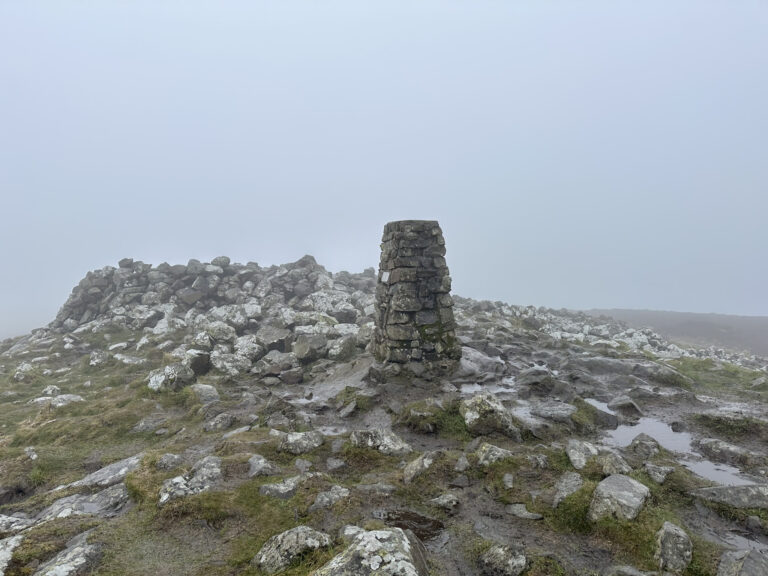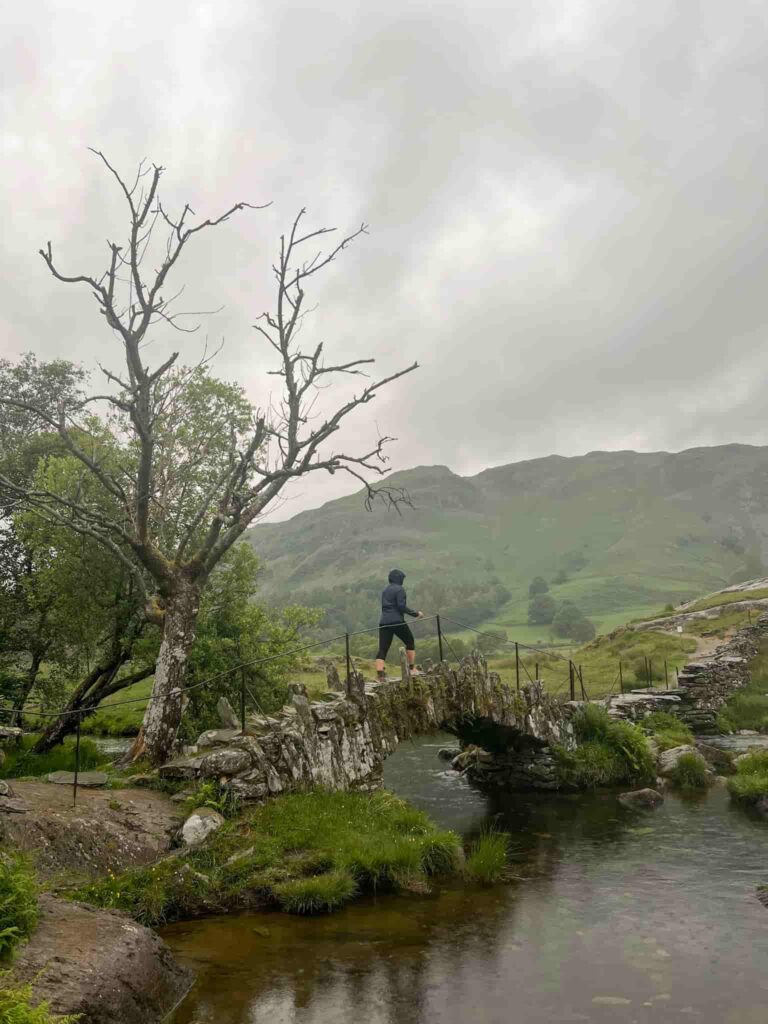Cathedral Cave and Hodge Close Quarry | 4 Miles
This walk explores the mysterious Cathedral Cave and Hodge Close Quarry, aka Britain’s Scariest Cave! Starting from Hodge Close Quarry car park, the walk is just under 4 miles long and explores some of the industrial history of the area.
Hodge Close Quarry is located near the village of Coniston in the Lake District, Cumbria, England. It’s a popular spot for climbers, divers, and hikers due to its dramatic, steep walls and deep water-filled pit. We visited on a misty day and it was very atmospheric.
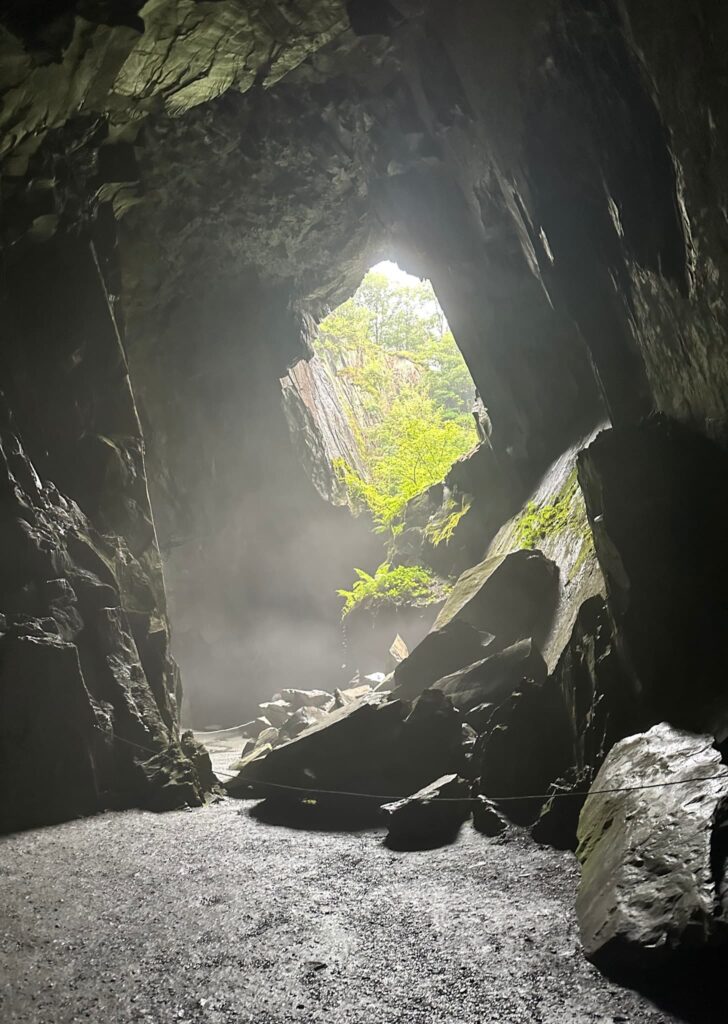
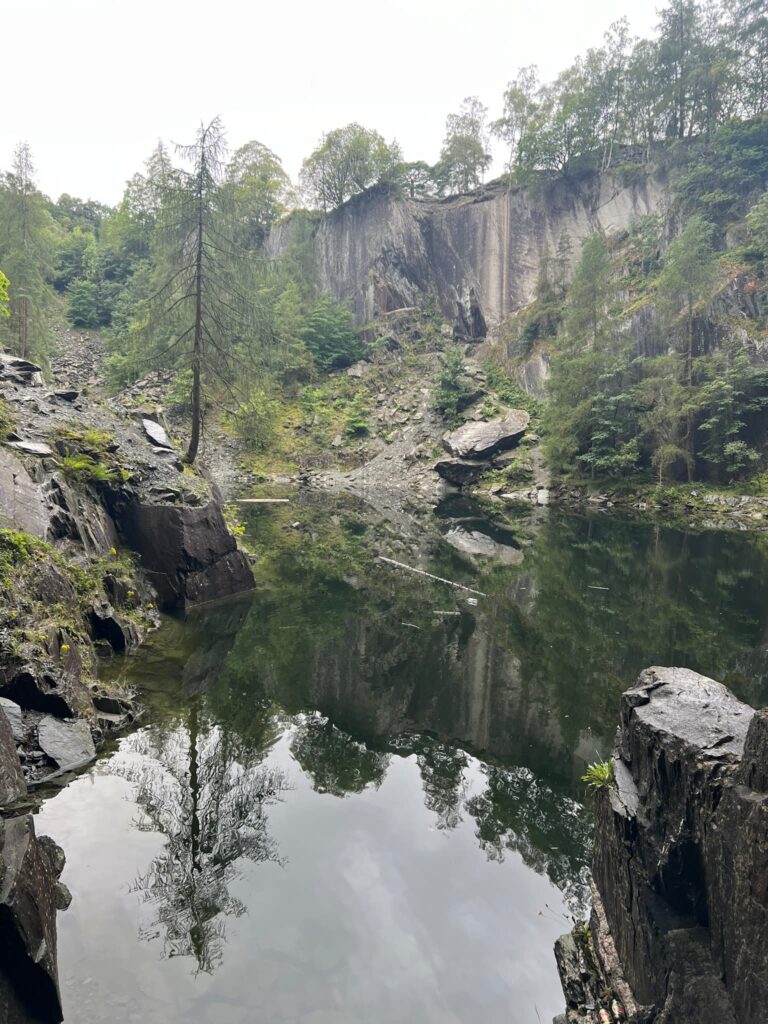
History of Hodge Close Quarry
Hodge Close Quarry was originally a slate quarry and has been in use since the 19th century. The Lake District has a rich history of slate mining, and the area was once a hub for slate extraction. Hodge Close was one of several large slate quarries in the Coniston area.
The quarry was primarily used to extract green slate, which was highly valued for its quality and durability. Quarry operations ceased in the 1960s, and since then, the site has become a popular destination for adventurers, including rock climbers and divers who explore the flooded caverns.
The quarry, now filled with water, remains a site of natural beauty and intrigue, attracting visitors who come to marvel at its dramatic cliffs and the eerie “skull” illusion. However, it’s important to note that Hodge Close can be dangerous, especially for inexperienced visitors, due to its steep drops and the cold, deep water.
History of Cathedral Cave
Cathedral Cave is a man-made cave located near Little Langdale in the Lake District, Cumbria, England. Its history is closely tied to the area’s slate mining industry, which dates back to the 19th century. The cave was part of the extensive slate quarrying operations in the Little Langdale area, and was created as miners extracted slate for roofing and building materials, which were in high demand during the Industrial Revolution.
The cave gets its name from the impressive 40-foot (12-metre) high main chamber, which resembles the interior of a grand cathedral due to its high vaulted ceiling and dramatic natural lighting. The large chamber is supported by a single, striking pillar of rock, giving it an almost architectural feel, reminiscent of a cathedral nave. The main chamber is accessible through a short tunnel, and there are other passageways and smaller caves in the vicinity.
Slate extraction in the area slowed and eventually ceased by the early 20th century, and the cave was abandoned by miners. Since then, the cave has become a really popular site for walkers, climbers, and explorers, as well as photographers and filmmakers, thanks to its mysterious appearance and the play of light inside the main chamber.
Cathedral Cave and Hodge Close Quarry Walk
Our walk started from a small lay-by near the top of Hodge Close Quarry and we headed off along the road to the cluster of cottages, passing the viewpoint for the skull cave along the way (see below). There’s a large wooden gate on the left which leads down past the huge slate spoil heaps along a cinder track, crossing Pierce Howe Beck.
The track continues down to meet the road near the River Brathay footbridge and we continued up a short distance until we came across a stile on the left hand side of the path. There’s a short climb up through the woods, and the path then opens out into an open area.
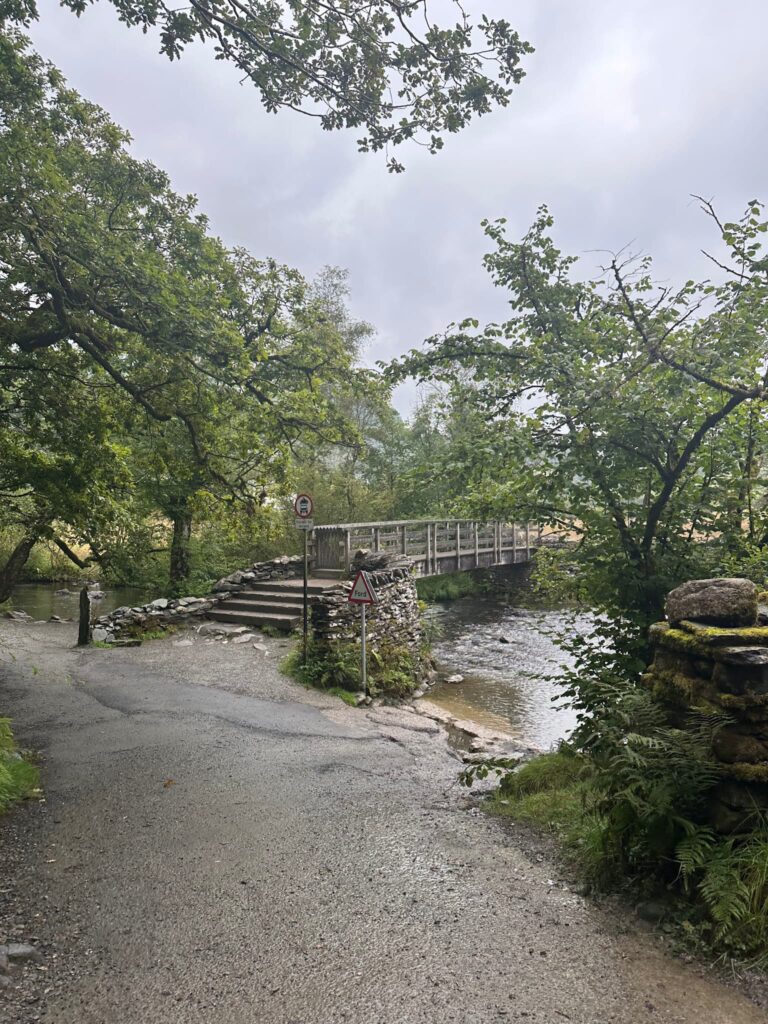
There’s a National Trust sign board just outside the entrance to a tunnel which heads off into the main cavern or Cathedral Cave, which is the Insta-famous spot you’ll have seen a ton of photos of. It’s an amazing place to visit. Heading through the cave itself, passing the great pillar that seems to be holding up the ceiling, there are some stepping stones which lead to another tunnel and from here you can explore higher levels of the quarry. There is a short scramble section to access the upper levels.
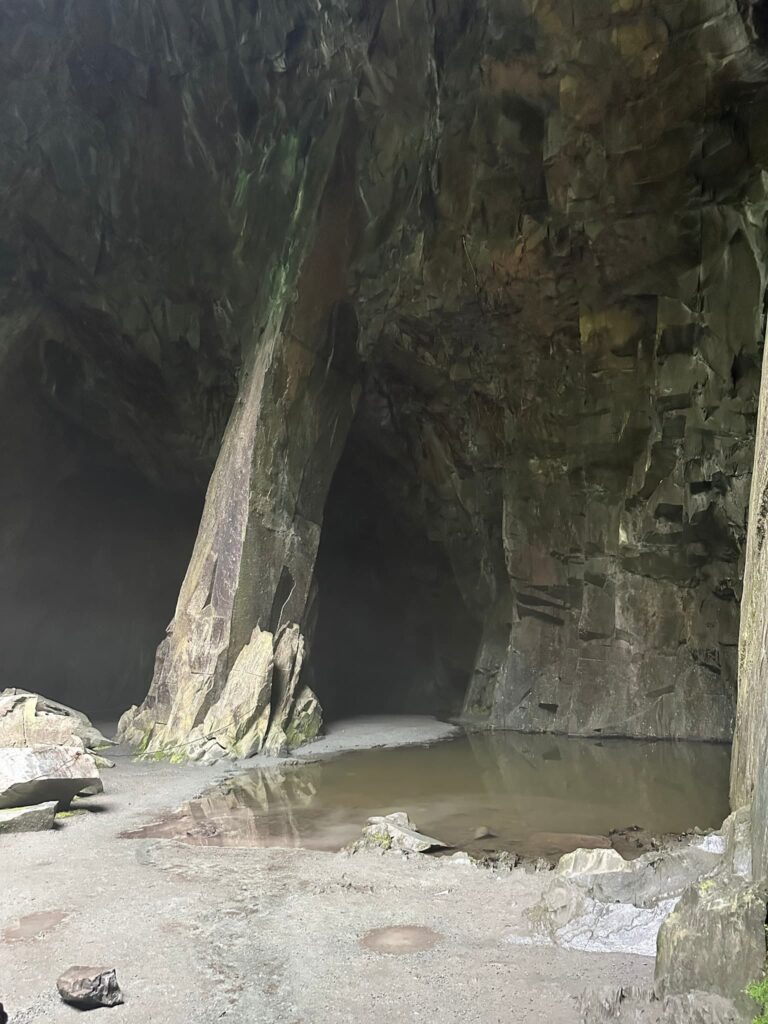
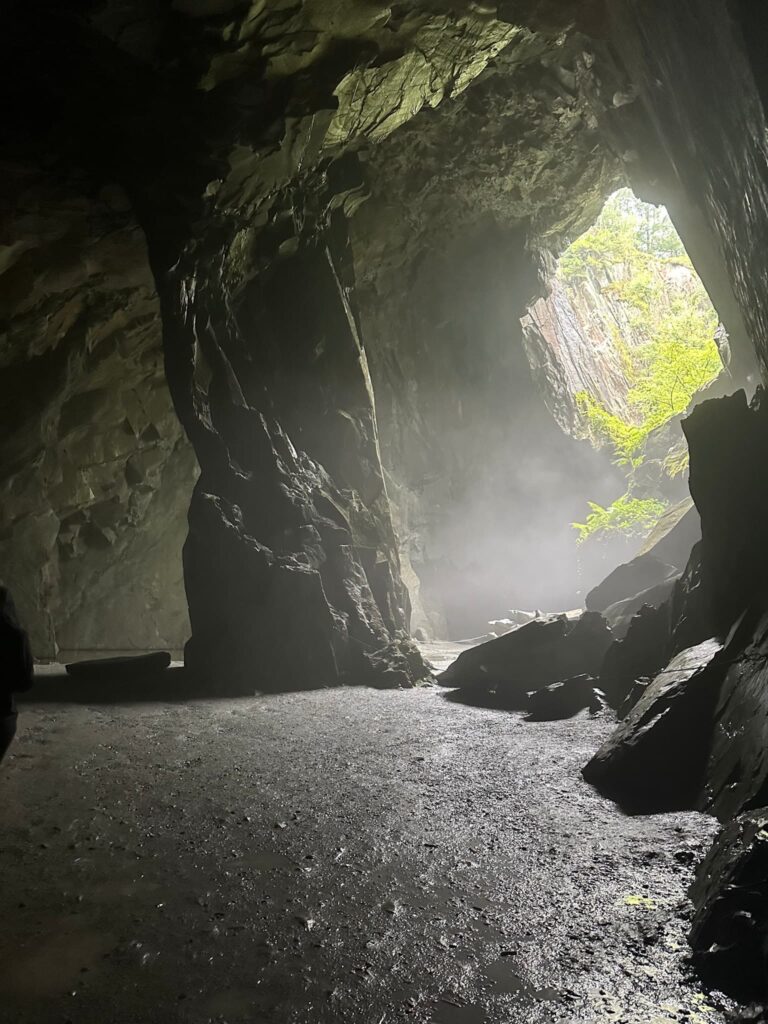
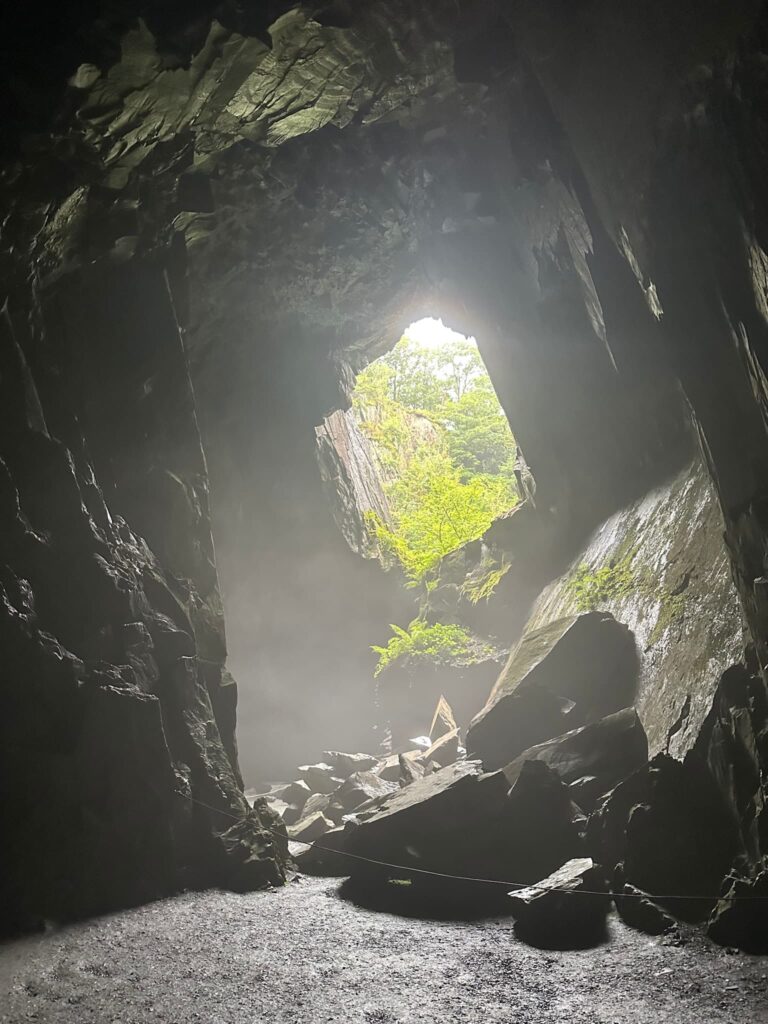
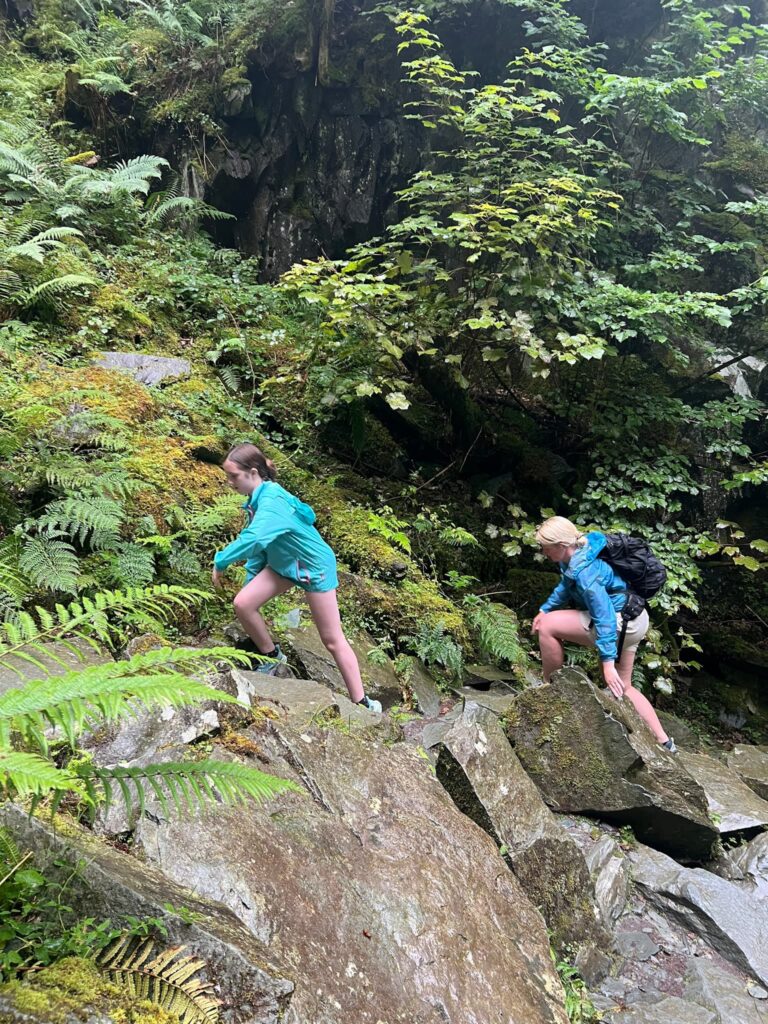
We wound our way through the quarry and headed back up onto the top level via some steps. From here we walked down past the small building, passing the tunnel entrance, and back onto the Tilberthwaite bridleway, passing the bridge over the River Brathay again. Heading south then east along the road we passed a few small buildings before heading south along the track towards Hodge Close Quarry.

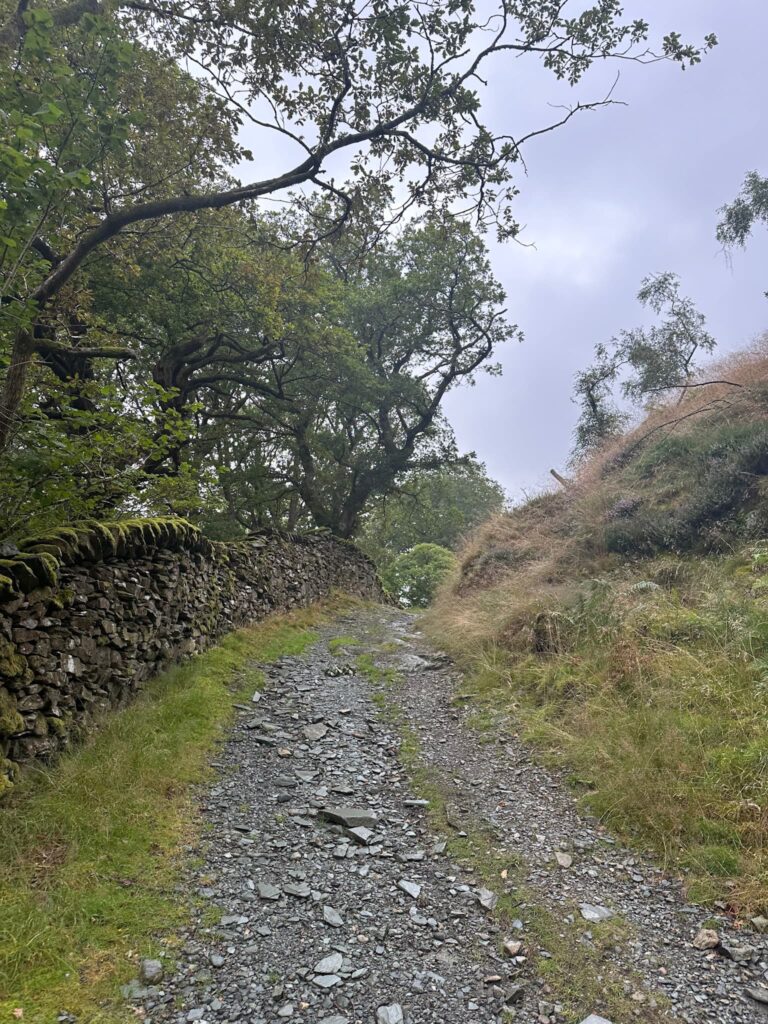
The entrance to Hodge Close Quarry isn’t obvious at all, and we walked past it at first! The track eventually leads to some cottages. Before you reach the cottages there’s a wooden sign post for High Oxen Fell and Stang End – we took this track and after a short distance the track opens out into a clearing where there is a gap in the wire fence leading to the entrance.
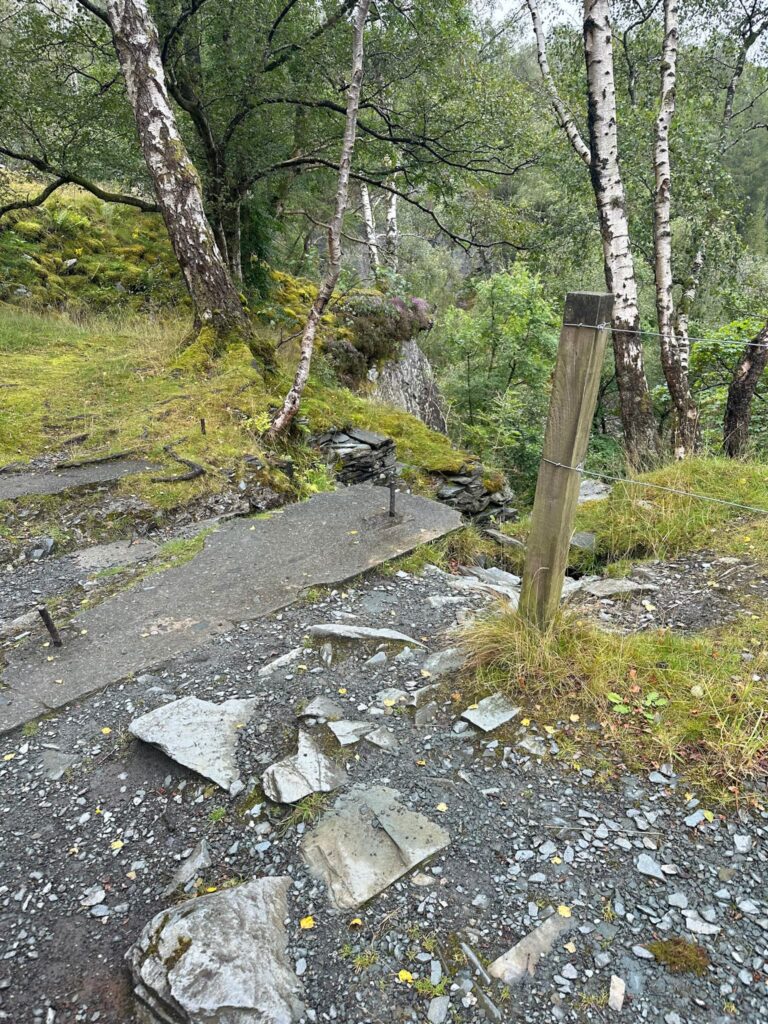
It’s a bit of a scramble down through the overgrowth to reach the cave – you’ll feel like your in Jurassic Park or Indiana Jones here – but it’s worth it! After a short distance we arrived in the cave. You can see the remains of one of the cranes in one of the cave entrances.
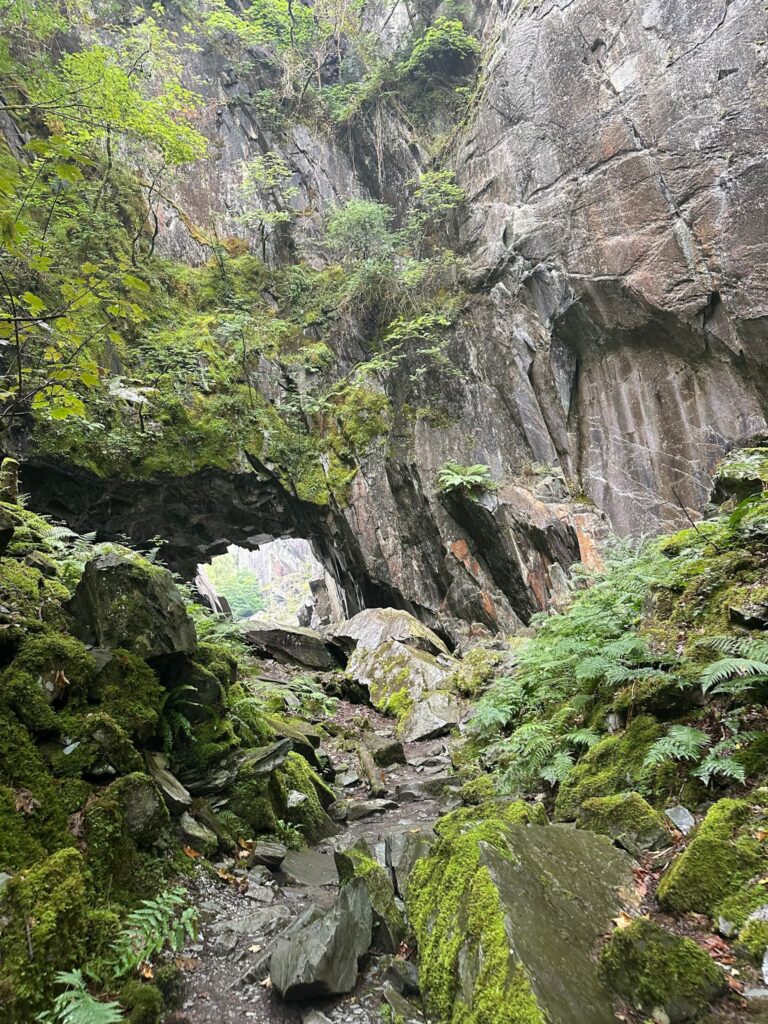
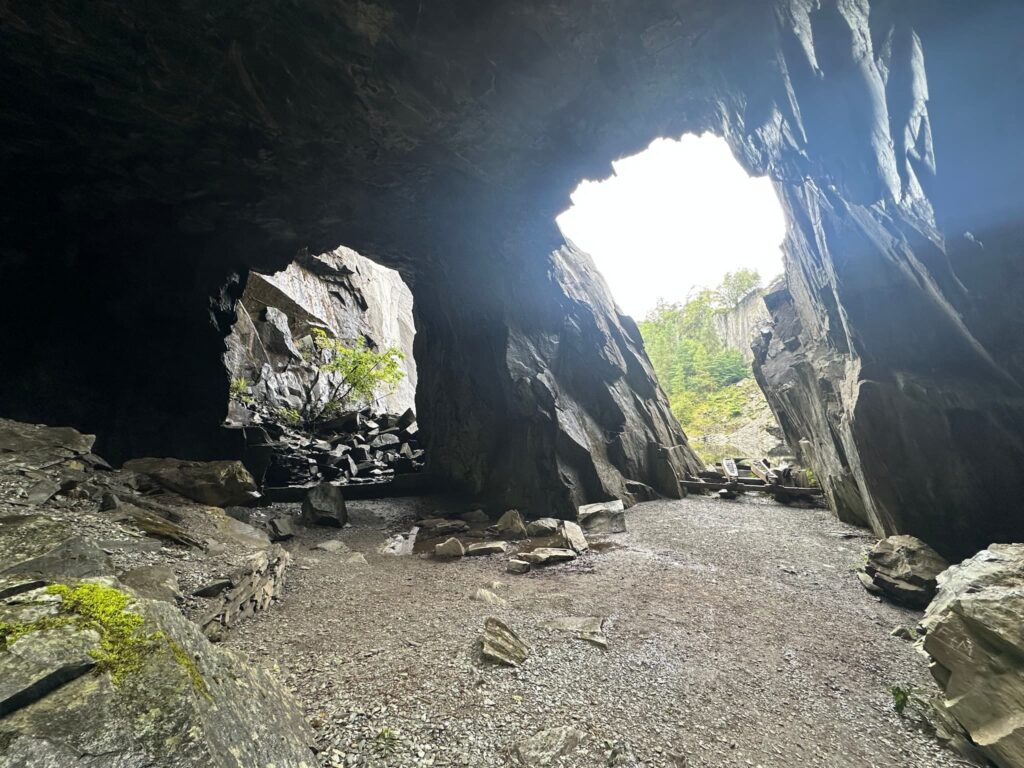
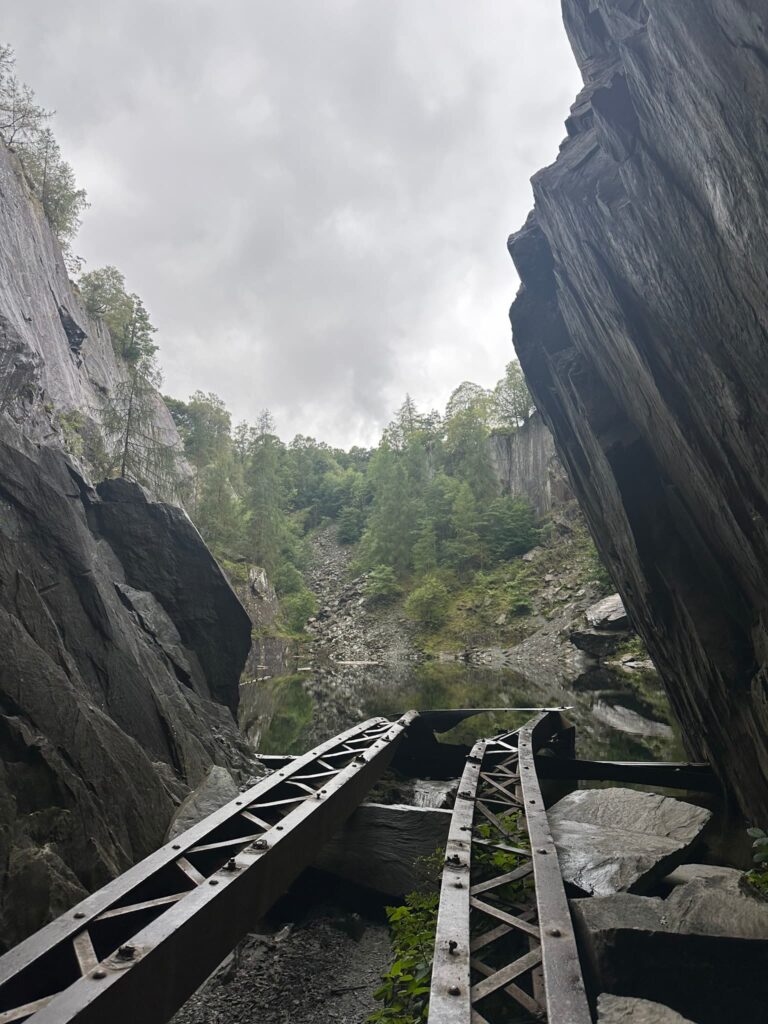
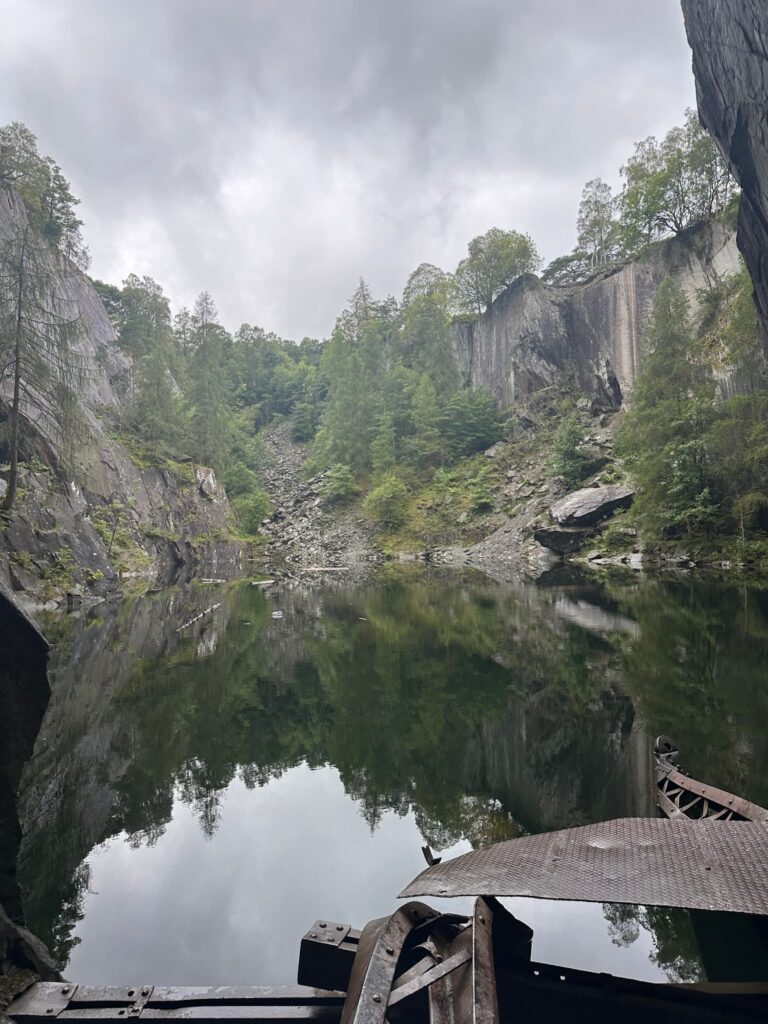
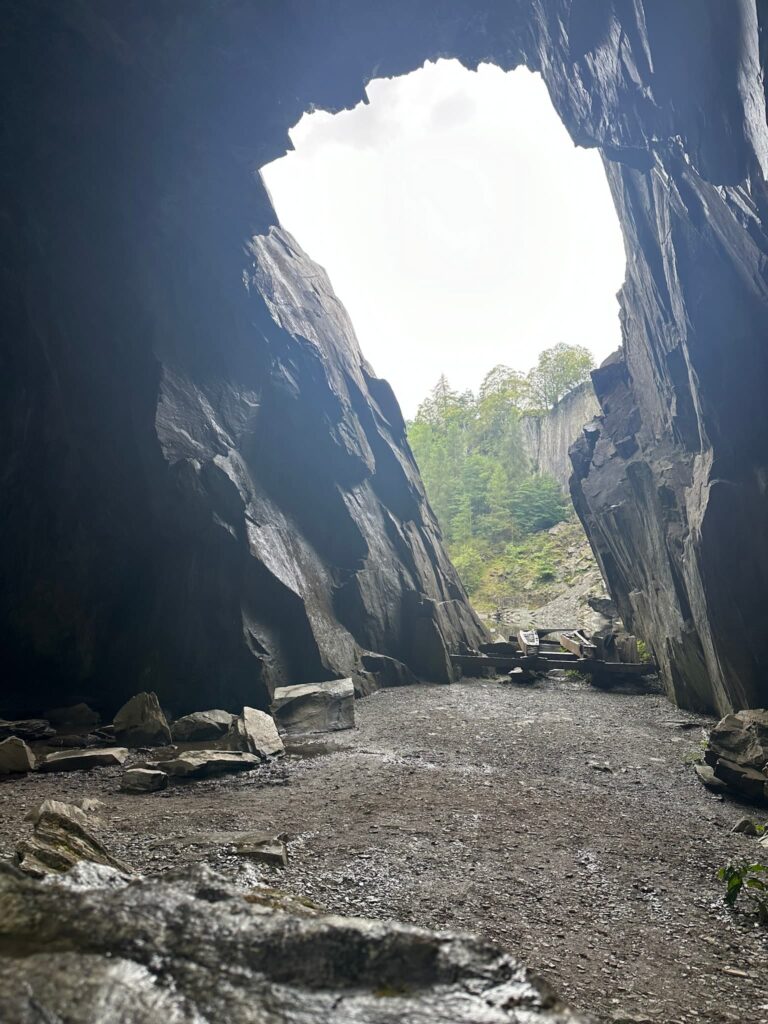
After exploring the cave we headed back the way we came, up onto the tracks, before heading past the cottages and back to the car park.
Hodge Close Quarry and Cathedral Cave Route
Walk Map (Opens in OS Maps): Hodge Close Quarry and Cathedral Caves Walk Map
Parking: Parking layby at Tilberthwaite Quarry (use postcode LA21 8DJ) | W3W:///ship.mills.workouts This is free but not very big, so get there early.
Facilities: None – remember to leave no trace!
Walk Time: 2-3 hours
Difficulty: ▲
Distance: 4 miles (6km)
Trig Points Bagged: None
Wainwrights Bagged: None
For more Lake District caves walks you might like:
Rydal Cave Walk, Ambleside | 2 Miles
And for more Lake District walks why not try:
Rannerdale Knotts [and the Bluebells] | 4 Miles
Dodd Fell Summit Trail | 4 Miles
Walla Crag, Bleaberry Fell and High Seat | 6 Miles
How Long is the Cathedral Cave Walk?
The Cathedral Cave walk is relatively short, depending on where you start. If you’re starting from the nearby village of Little Langdale, it is about a 2-3 mile (3-5 km) round trip, and the walk typically takes around 1-2 hours to complete, depending on your pace and how long you spend exploring the cave itself. This walk was slightly longer as we included Hodge Close Quarry as well.
Is the Cathedral Cave Free?
Yes, Cathedral Cave is free to visit. It’s located on land owned by the National Trust.
Where to Park to Walk to the Cathedral Cave?
There are a few parking options depending on where you’re starting the walk:
- Tilberthwaite Quarry Car Park: A good starting point for a scenic walk that takes in Hodge Close Quarry, the Cathedral Cave and the surrounding quarry landscape. This is where we started our walk from.
- Little Langdale Village: You can park near Little Langdale and walk through the beautiful countryside to the cave. Be mindful that parking can be limited.
- National Trust Car Park at Fell Foot Farm: This is another good option, located near Little Langdale, and it’s free for National Trust members.
If these car parks are full, there may be other roadside parking options nearby, but always be sure to park responsibly and not block any gates or access roads.
How to See the Skull at Hodge Close Quarry
Dubbed ‘Britain’s Scariest Cave’, Hodge Close Quarry is famous for the eerie “skull” that you can see. It’s a naturally occurring optical illusion formed by the shape of the rock face combined with a reflection in the water below. The skull can be tricky to spot at first, but the right perspective (and lighting, and lack of wind) reveals the distinct “eye socket” and “nose” in the stone.
There are some amazing images on Google of this – my photo wasn’t anywhere near as good! If you tilt your head to the left you can just about imagine the skull reflected in the water. Just.
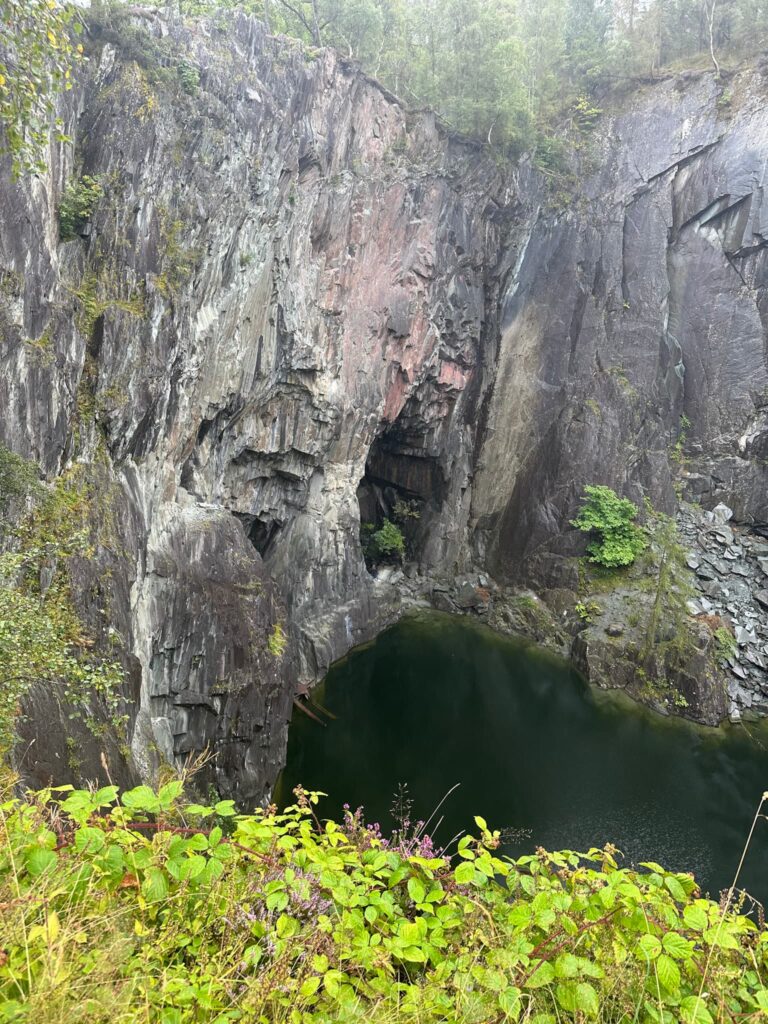
To see it:
- Walk to the higher ground or an elevated position along the quarry’s rim – there’s a viewing place up near the car park.
- The skull illusion becomes most apparent when looking at the face of the quarry wall where the reflections in the water mirror the rock features.
- A clear, calm day with little wind will help ensure the water’s reflection is visible.

